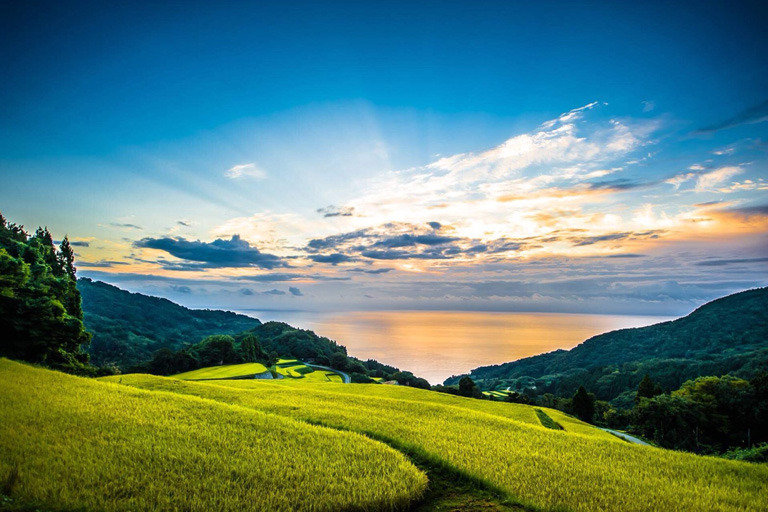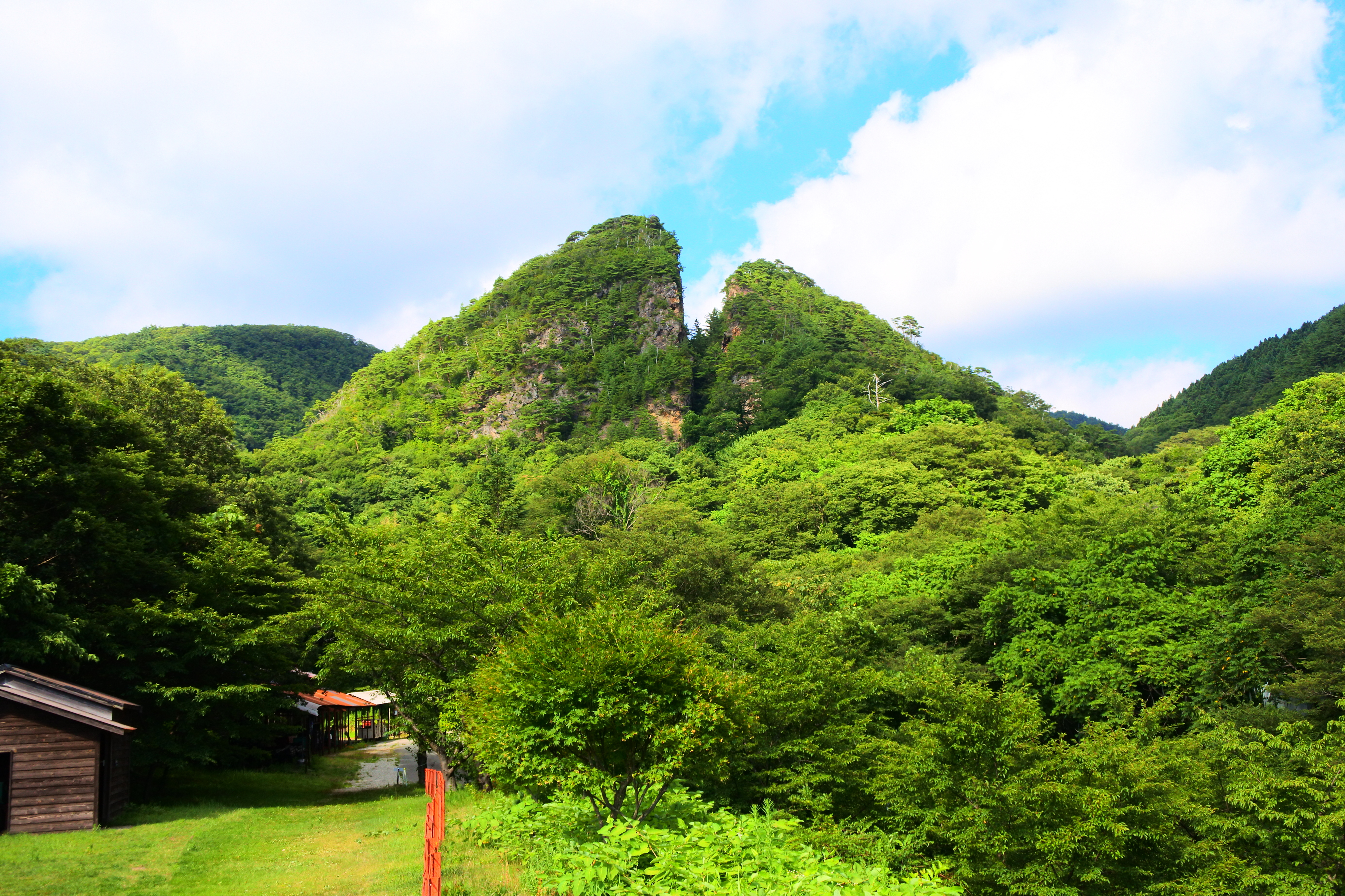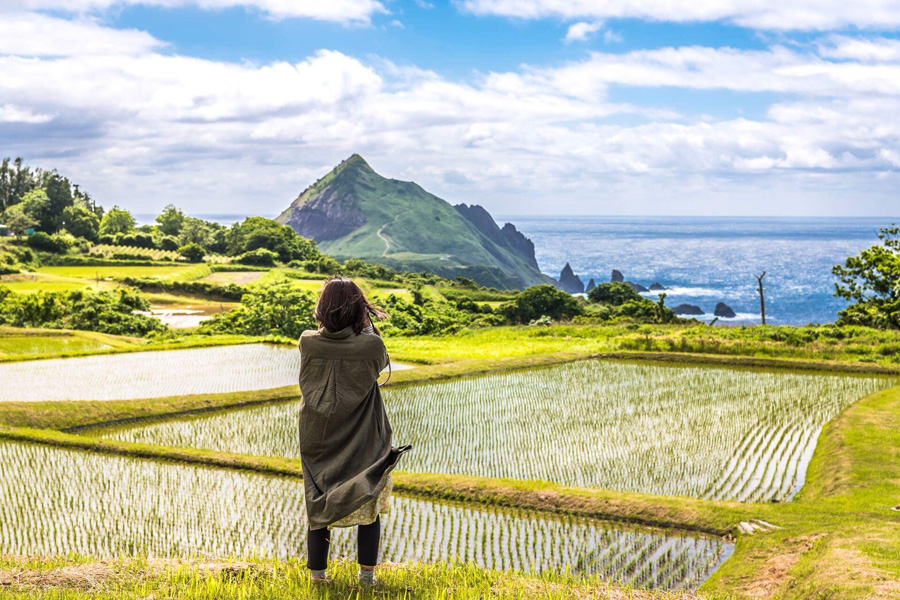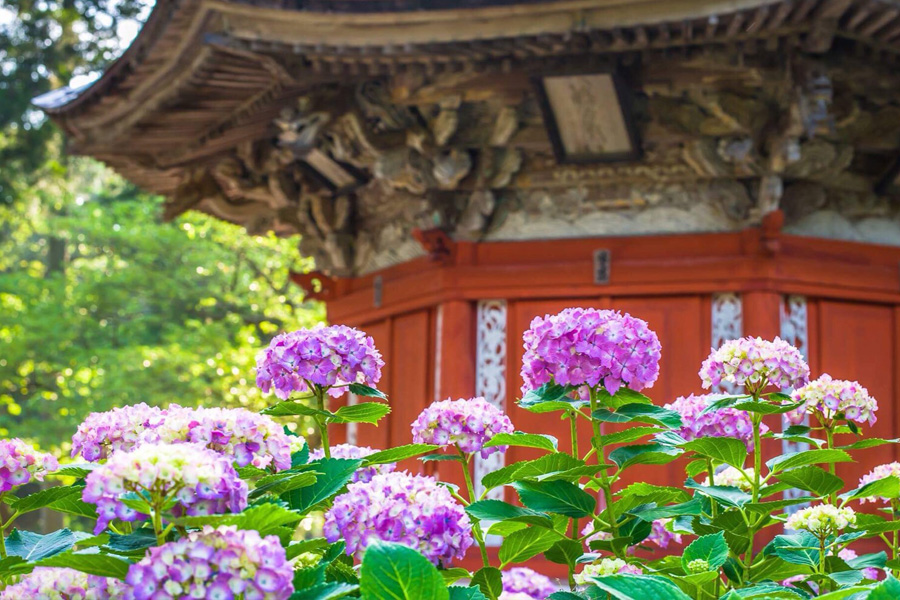


佐渡の魅力
日本の魅力を凝縮した「宝島」
蝶が羽ばたくような形をしていることから「バタフライ・アイランド」とも呼ばれる佐渡島は、およそ280kmという海岸線を誇る日本海側最大の島。四方を海に囲まれた海洋性の気候で、春夏秋冬、豊かな海と山々が織りなすロケーションはまさに日本列島の縮図です。
本州から海を隔てたことが、時の流れを緩やかにしてきたのでしょう。永きに亘る歴史と伝統を色濃く残しながら、豊かな自然の恵みに感謝して生きる暮らしがこの地にあります。かつて日本一の金山として栄えた宝の島は、日本の魅力をぎゅっと詰め込んで、いま私たちに伝えてくれる場所なのです。

佐渡金山 -世界文化遺産-
佐渡金山のシンボル「道遊の割戸」は地表から巨大な金脈を掘り進み、山がV字に割れたような姿の採掘跡です。 江戸時代に採掘され、このような垂直に近い絶壁の露天掘りは、世界でも一段と優れています。 山頂部の割れ目は、幅約30m、深さ約74mにも達します。道遊脈と呼ばれる優良鉱脈があり、明治以降も割戸の下部で大規模な開発が行われました。 現在は第46回世界遺産委員会において、世界文化遺産として登録されています。

大自然の宝箱
日本海に浮かぶ佐渡ヶ島の周囲は、水深200mまでを対馬暖流が覆い、その下は「日本海固有水」と呼ばれる海水で満たされています。この水深200mから深い箇所にある太陽光線が届かない海水のことを“海洋深層水”と呼んでいます。
地球上のほぼ全ての無機元素を含むミネラル豊富な海洋深層水は、赤ちゃんを大切に包み育てる羊水とミネラル比が似ており、"母なる海" といわれる由縁とも言えます。

歴史が伝わる島
約300万年前から続く地殻変動で生まれた佐渡は、日本の海岸地形がすべて揃うなど、風景そのものがまるでテーマパーク。寒暖両系の植物境界線である北緯38度線が島の中央を通過しているため1700種近い植物が自生しており、本州では2000メートル級の標高でなければ見られない山野草の群生が見られるなど、自然を楽しむ人にとっては夢のような場所です。特別天然記念物「トキ」が保護・放鳥されているのは、このロケーションあってのこと。登山・トレッキングはもちろん、ランニングやトライアスロン、ダイビングやシーカヤックなど、大自然のアクティビティを堪能できる最高のフィールドがここにあります。
伝統文化を体験
伝統的な文化がしっかりと息づいているのも佐渡の魅力。優美な佐渡おけさや、集落ごとに異なる鬼太鼓(おんでこ)、つぶろさしや花笠踊りなど、シーズンを通して島の至るところに見るべきものがあり、体験できるものもあります。
とりわけ能に関しては、これが広く暮らしの中に溶け込んだ全国でも珍しい地域であり、実に日本の3分の1に相当する能舞台が残っています。もともと武士の教養であった能は神事として島内に伝わり、やがて村人が舞い・謡い・観る娯楽として変遷していきました。6月は毎週どこかで能が観られる月間で、これを楽しまない手はありません。

